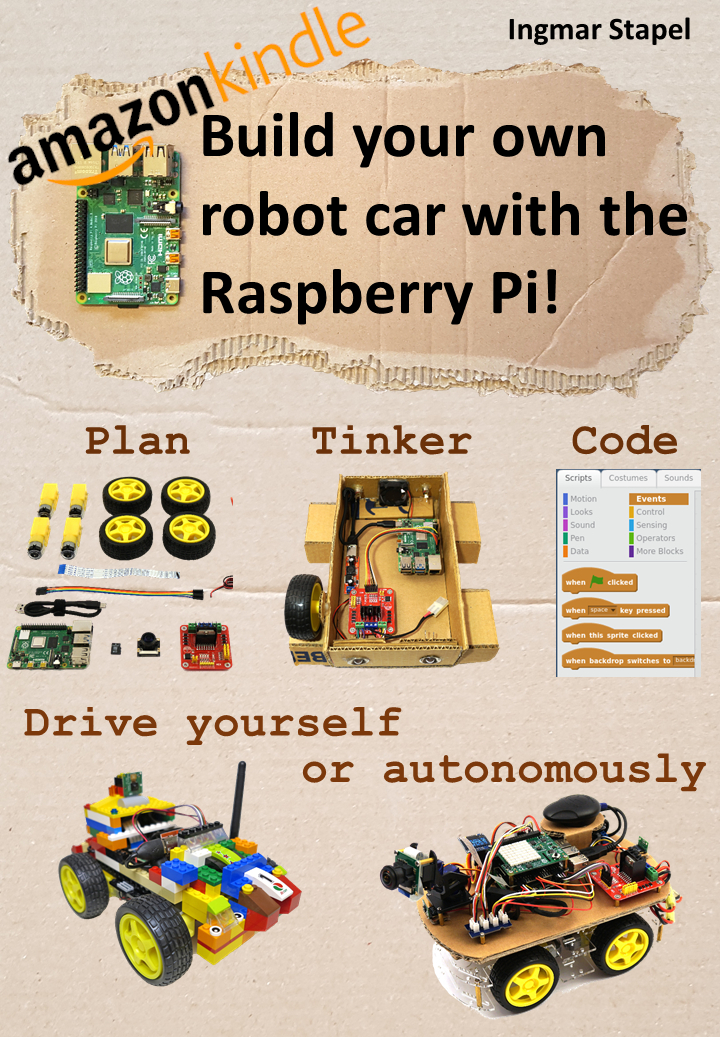The Raspberry Pi camera module v2 is the latest camera module released by the Raspberry Pi foundation in April 2016. The V2 module is the predecessor of the first camera module sold over the last years. I recommend to buy the new module even it is a little bit more expensive. The new camera module works the same way as the old camera module did. It is connected via a CSI cable und fully supported by the software which is pre-installed in Raspbian.
The picture below shows the NoIR Raspberry Pi camera module on the left and the normal camera module on the right.
Update the Raspbian installation
The only task you have to do is to update your Raspbian installation if it was updated the last time before May 2016. With running the update process you ensure that the new camera module will be fully supported by Raspbian. To update your installation you should execute the following commands in your terminal window. To be save create a backup of your mirco SD-card first if the update process will run on an error.
- sudo apt-get update
- sudo apt-get upgrade
- sudo rpi-update
After the three update commands where executed, a few minutes later and each update step is finished the Raspberry Pi Camera Module v2 is fully supported by Raspbian. The usage is the same way as before. I found no differences to capture pictures or to record a video. As well my mjpg-streamer installation works perfectly together with the new module and the live video streaming works as before.
Camera V2 Test
Both modules the NoIR and the standard module are working perfect in my robot-cars I build. The dimensions of the modules are the same as from the first camera module and the replacement of the old camera module with the new one was very easy. I only have to plug the CSI cable into the new module and the robot-car was ready to stream the live video with the new V2 camera. The NoIR module shows much more details in twilight then the former NoIR module. This is perfect for my security robot I actual build but which is not yet finished. With the NoIR module you are not able to capture a full colored picture even by daylight. But as the name says the NoIR module is designed for usage by twilight.
Technical specifications
The camera module is from Sony and the image quality is much better then the quality from the previous module. I bought the standard module as well the NoIR module to use them in my robot projects.
The v2 camera has a Sony IMX219 8-megapixel sensor (compared to the 5-megapixel OmniVision OV5647 sensor of the original camera)
Officel post: Camera module V2
| Item | IMX219PQ | |
| Image size | Diagonal 4.60 mm (Type 1/4.0) | |
| Total number of pixels | 3296 (H) x 2512 (V) | |
| Approx. 8.28M pixels | ||
| Number of active pixels | 3280 (H) x 2464 (V) | |
| Approx. 8.08M pixels | ||
| Fabrication process | Back-illuminated process | |
| Unit cell size | 1.12 µm (H) × 1.12 µm (V) | |
| Output format | MIPI 4, 2 Lane | |
| Control communication interface | I2C fast mode plus (1 MHz) | |
| Power supply | Analog | 2.8 ± 0.2 V |
| specifications | Digital | 1.2 +0.1/-0.12 V |
| I/O | 1.8 ± 0.18 V | |
| PGA | 44.56 dB (Max.) | |
| Input clock frequency | 6 to 27 MHz | |
| Signal processing function within sensor | Spot pixel compensation | ✔ |
| Moving picture specifications | 720p | 180 frame/s |
| 726M bps/Lane × 4 Lane | ||
| 1080p | 60 frame/s | |
| 726M bps/lane × 4 Lane | ||
For more details about the camera module visit the Sony web page: Sony IMX219
The picture below shows my floppy disc robot-car with the NoIR and standard camera module. A Raspberry Pi Sense-HAT as well is shown in the picture on the right to support the self-driving mode of my robot with the sensors of the Raspberry Pi Sense-HAT.
Summary
Both modules are very good supported by Raspbian and the image quality is very good. The NoIR module is very good for a security application like a security robot to patrol your apartment by daylight and twilight. The dimensions of the new module is the same as from the first module. To exchange the modules is very easy you only have to plug the CSI cable into the module and update the Raspbian installation if it was updated the last time before April 2016.
















Recent Comments